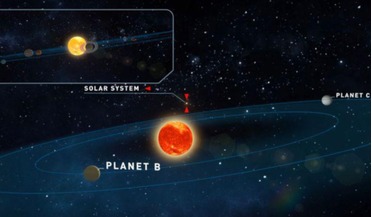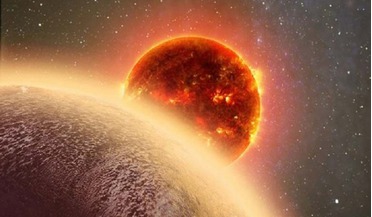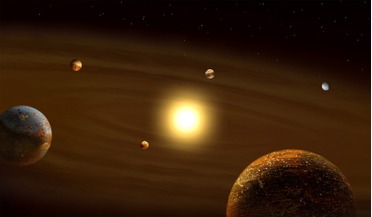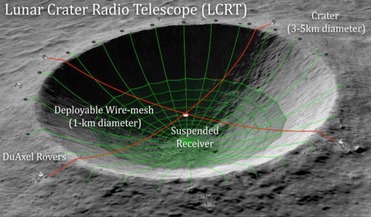 19 June 2019
Two new Earth-like planets found around nearby star
19 June 2019
Two new Earth-like planets found around nearby star
... make it a brown dwarf instead of a red dwarf, has been found to house two Earth-like worlds that are only slightly heavier than our planet. Just as exciting, they are also located in the so-called habitable zone, where...
 July 2014
Space technology transfer portals and the chance progress of innovation
July 2014
Space technology transfer portals and the chance progress of innovation
... is unique in the universe in its ability to sustain life. To find out, we need to be able to study Earth-like planets circling other stars to measure whether their atmospheres are capable of supporting life, or indeed carry the chemical ...
 11 March 2020
Ultra-hot exoplanet literally rains iron say astronomers
11 March 2020
Ultra-hot exoplanet literally rains iron say astronomers
... — has proven to be much more versatile than than its original intended use of just looking for Earth-like planets around Sun-like stars. “We soon realised that the remarkable collecting power of the VLT and the extreme stability...
 02 March 2016
Using MUSCLES to test for life on other planets
02 March 2016
Using MUSCLES to test for life on other planets
...without the stellar UV spectrum, scientists cannot produce realistic synthetic spectra of Earth-like planets in these systems, a necessary step for interpreting biomarker gases and their potential to diagnose habitability. However, flux ...
 27 July 2019
Hundreds of new planet candidates detected by Kepler
27 July 2019
Hundreds of new planet candidates detected by Kepler
... objectives could not be met. Not wanting to give up on this hugely successful planet hunter, instead of being able to monitor Earth-like planets around main sequence stars like our sun as it was designed to, it was proposed that Kepler search for...
 08 April 2020
NASA funds vast radio telescope concept on far side of the Moon
08 April 2020
NASA funds vast radio telescope concept on far side of the Moon
...to Slava Turyshev, a researcher at NASA’s Jet Propulsion Laboratory in Pasadena, California, to continue his design for imaging Earth-like planets outside of the solar system. Turyshev will receive a $2 million grant to further mature the concept and...